1lumen selects and reviews products personally. We may earn affiliate commissions through our links, which help support our testing.
NEXTORCH TA30C review
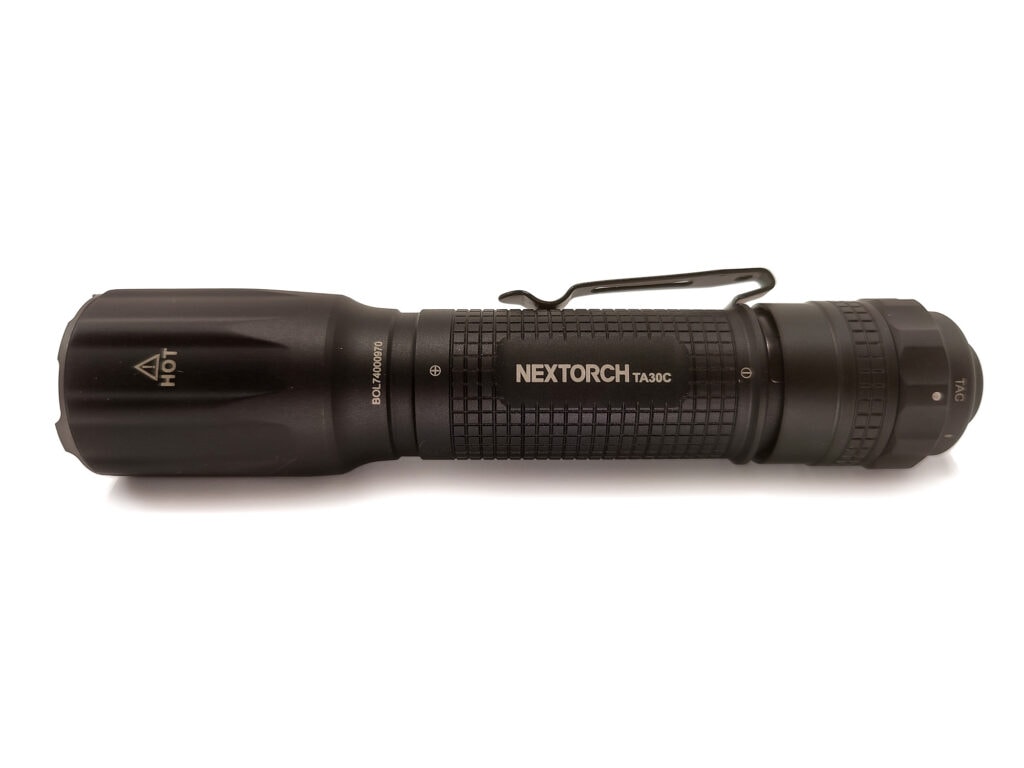
NEXTORCH TA30C specifications
| Brand & Model | NEXTORCH TA30C |
|---|---|
| Flashlight category | Tactical/EDC |
| LED | Luminus SST-40 |
| Max. output | 1600 lumens |
| Max. beam distance | 303 meters |
| Max. beam intensity | 22952 cd |
| Battery config. | 1*18650 or 2*CR123a |
| Onboard charging | No onboard, battery has built in charging |
| Modes | 3 |
| Blinkies | Strobe |
| Waterproof | IPX8 |
| Review publication date | January 2023 |
Introduction:
This is not my first rodeo with NEXTORCH. They have quite a few lights and love to continue iterations to make their lights better than the previous generation. Each has been an incremental improvement over the last generation (at least on paper). They have the chops to continue making these improvements, as they have been hard at work for the better part of 20 years to improve upon their designs and gather feedback, and it appears to be working. With over 142 patents and sales in over 100 countries, NEXTORCH definitely seems to know what they are doing, and with that said, let’s see if these improvements are worth the wait, or if this, in particular, is nothing worth writing home about and you could save your hard-earned money.
Package quality.
The box is a white thick cardstock that shows vivid images of the light as well as specifications printed cleanly on it. One interesting thing about it is that the battery is not included “inside” the packaging, but in its own separate plastic shell, nestled inside the box, from the outside. Once the battery is taken out, you can fully open the package and remove the light and its accessories. These and everything else located inside include:
- NEXTORCH TA30C
- Battery (in separate packaging)
- Spare O-Rings
- Lanyard
- Manual
- USB-C Charging Cable

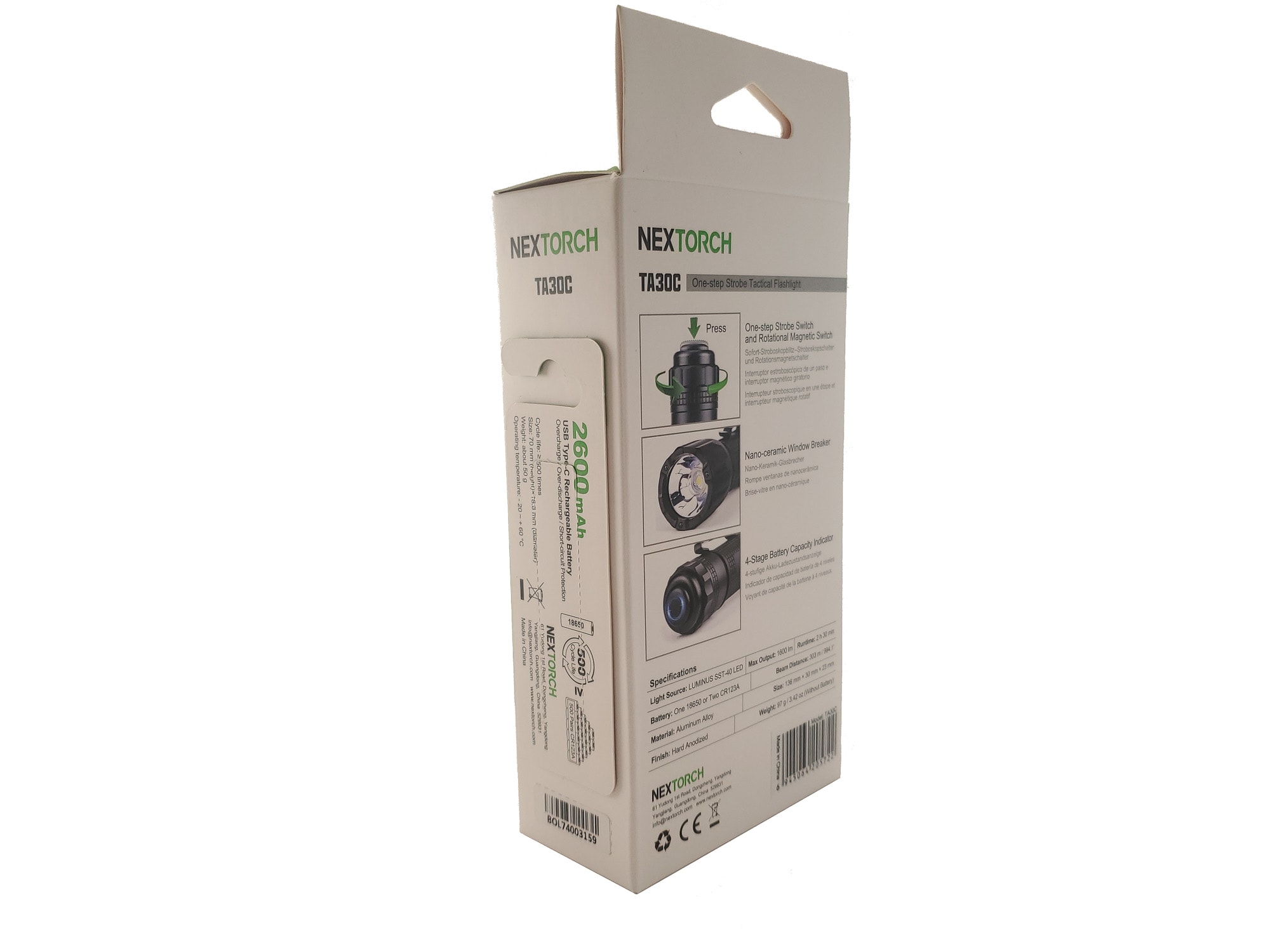
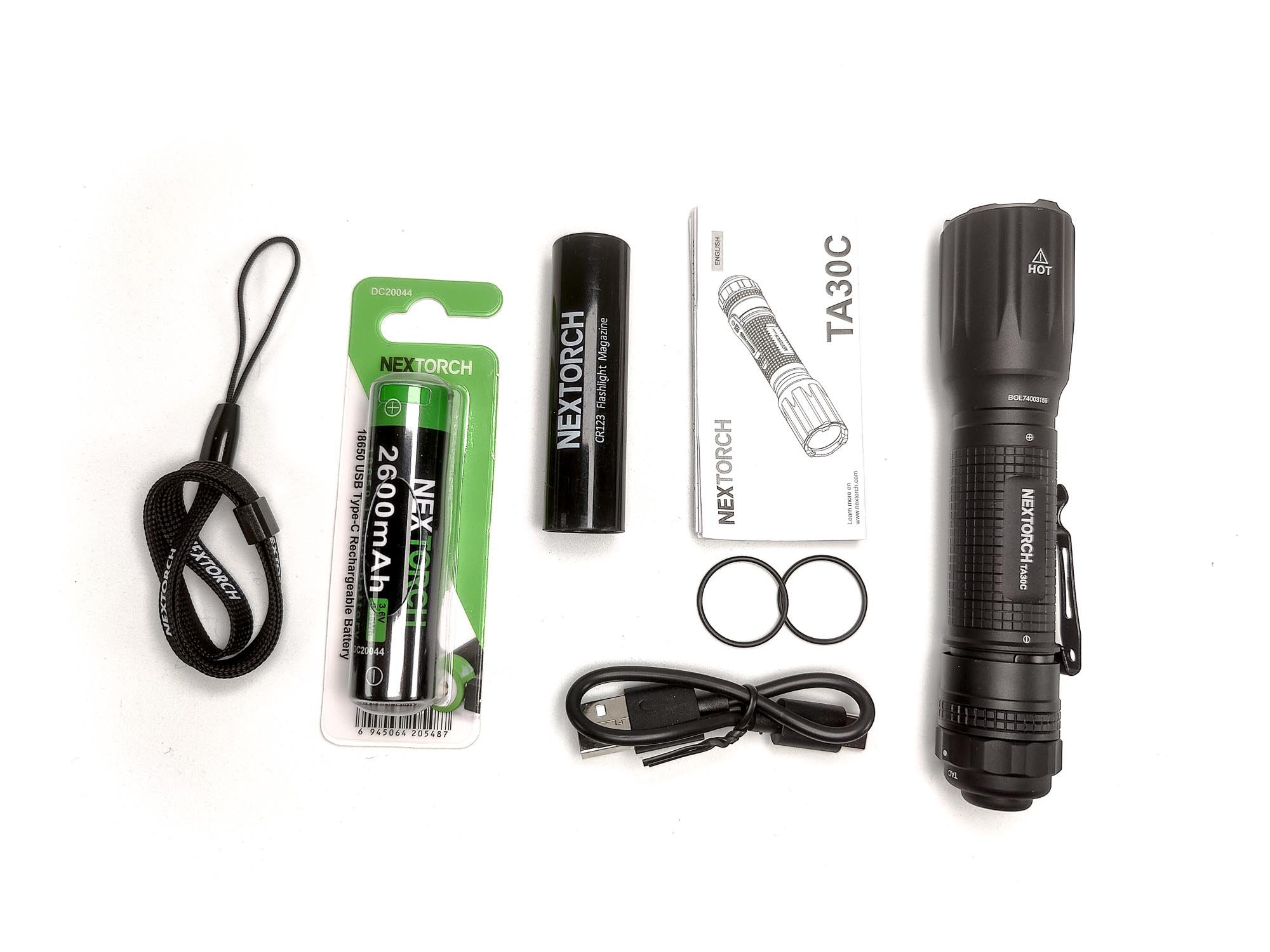
Flashlight in use
I reviewed the NEXTORCH TA30 Max a little while ago and this experience is nearly identical. Identical, just at a smaller scale. There is shallow knurling all along the body, and a small ring of the same, but deeper knurling, on the tailcap. This gives you plenty of grip when holding the light, or rotating the magnetic tail cap to change modes. The button on the tail is a momentary two-stage and has a lighted ring to give you indications of battery capacity (but more on that later). The magnetic ring has indexed machining and is easily rotatable but at the same time does not feel like it will slide around on its own. No tail standing for this one as there is a slight radius on that tailcap, presumably for comfort. There is also a captive, one-way pocket clip with a little bit of a throat, but is definitely not considered deep carry. On the opposite side of the light, the head has machined flats so it should stay put if you lay the TA30C down on its side. All things considered, this is considerably smaller than the TA30Max from earlier, but in a welcomed way. It maintains its tactical demeanor, but at a smaller size, making it also efficiently serve double duty as an EDC pocket carry.
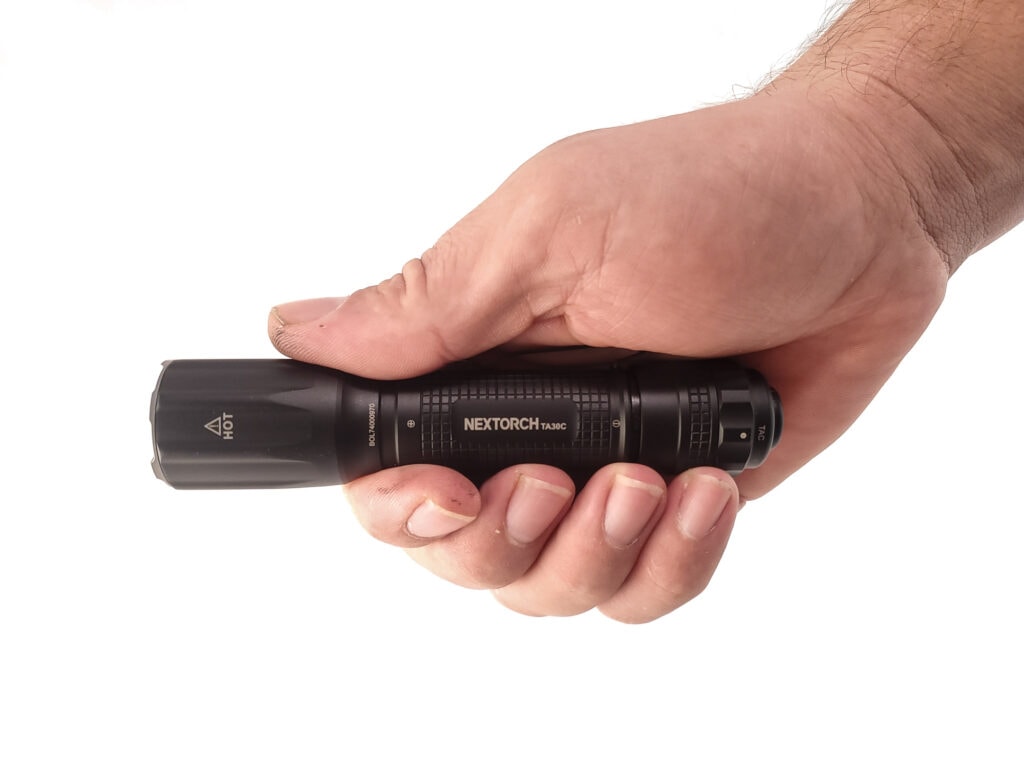
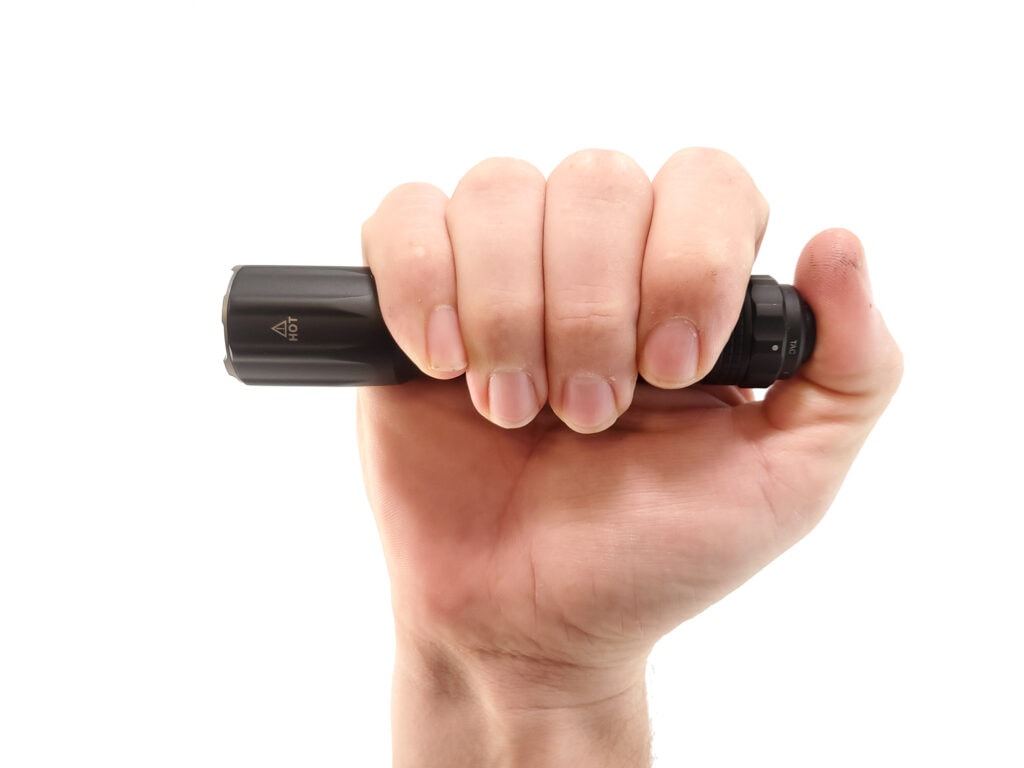
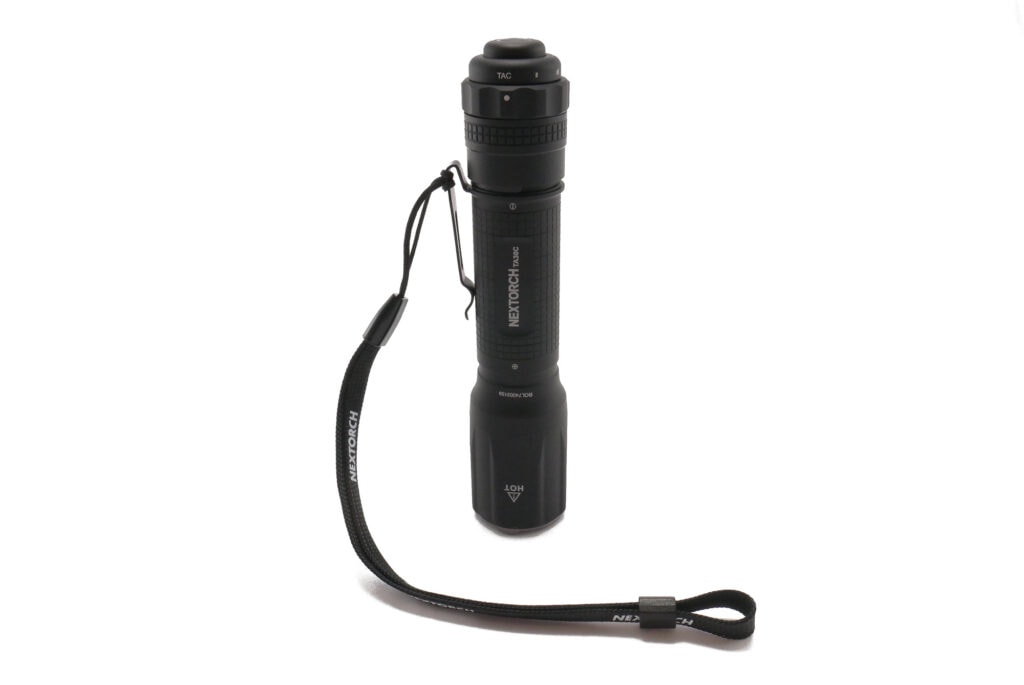
Build Quality, and Warranty
The NEXTORCH TA30C is a solid piece of 6061 aluminum, with the only break being on the tailcap. The head is machined into the battery tube/body so this removes one possible entry point for debris and water. It also keeps the light extremely rigid. This single, solid piece of aluminum is covered in an expertly uniform coating of Matte Type III hard anodizing.
There are plenty of colors available too, as long as the color you want is black. The knurling on the body and tail cap are square cut and just deep enough to improve your grip, without making you feel like you are grabbing onto a cheese grater every time you flip the light on. This level of precision continues underneath the tail cap onto the threads. The TA30C makes just enough noise to let you know there is a little bit of friction there, but it does not have me worried at all. While the threads did not have a ton of lubrication on them, it seemed to be focused on where it mattered; the o-ring.
The finish all over the TA30C is top shelf, except for the pocket clip. In the shorter span I have had the light, there appears to be signs of use showing on the throat of the pocket clip. It appears to be powder coated, but it seems to be wearing as though it were applied in a backyard with a rattle can. This is sort of a letdown, as the most “extreme” use it has gotten thus far is a few quick pulls from the ever aggressive Levi denim I wear to stay decent.
Moving on, the lanyard seems to be a generic lanyard that comes with most lights nowadays, but this time with the NEXTORCH name printed on it. Nothing out of the ordinary, but nothing noteworthy either. However, if something noteworthy were to happen to your TA30C, NEXTORCH is more than happy to keep you happy and take care of any issues that arise from manufacturer defects for the next 5 years. I am quite impressed with the dedication NEXTORCH has taken toward its customers’ happiness.
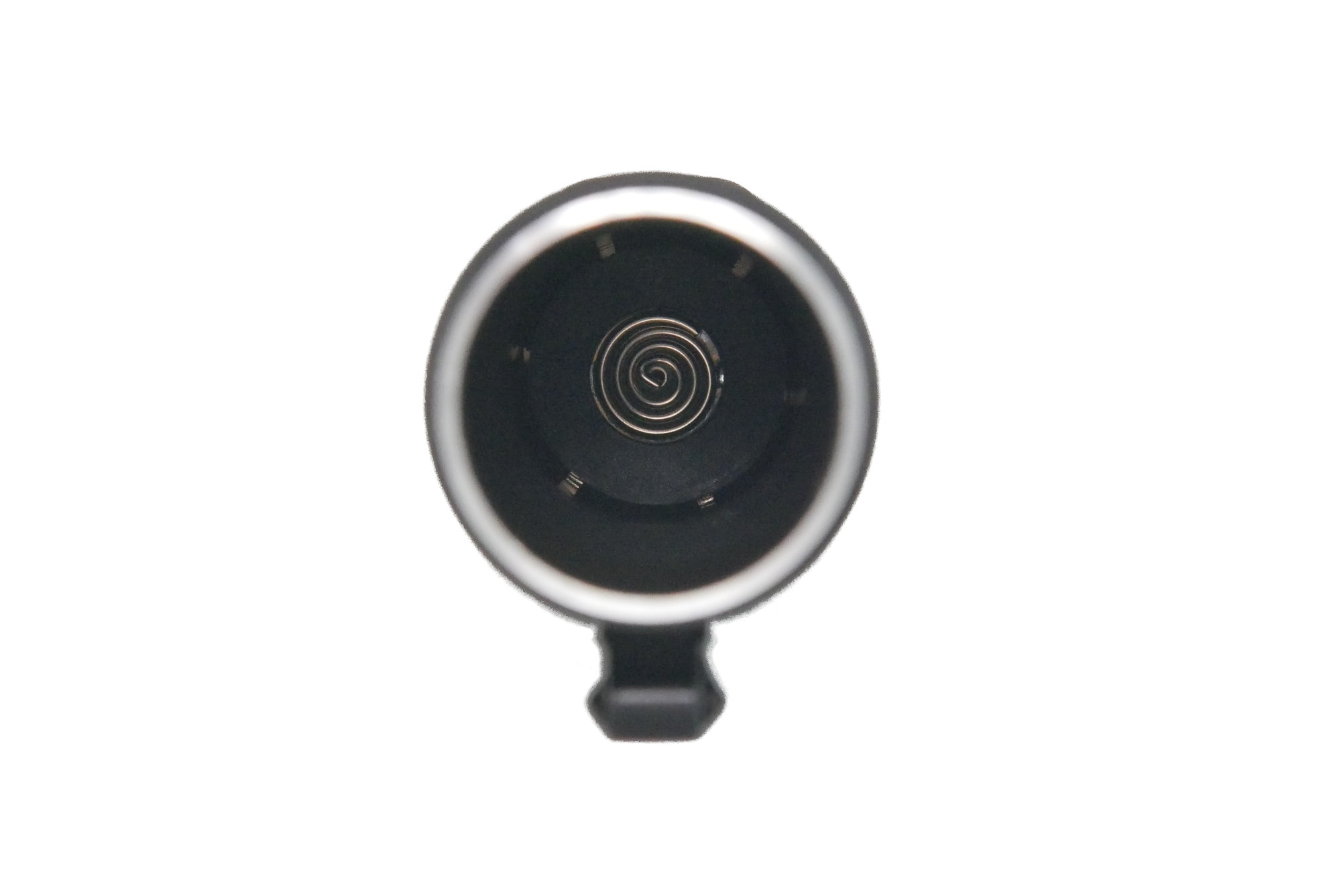
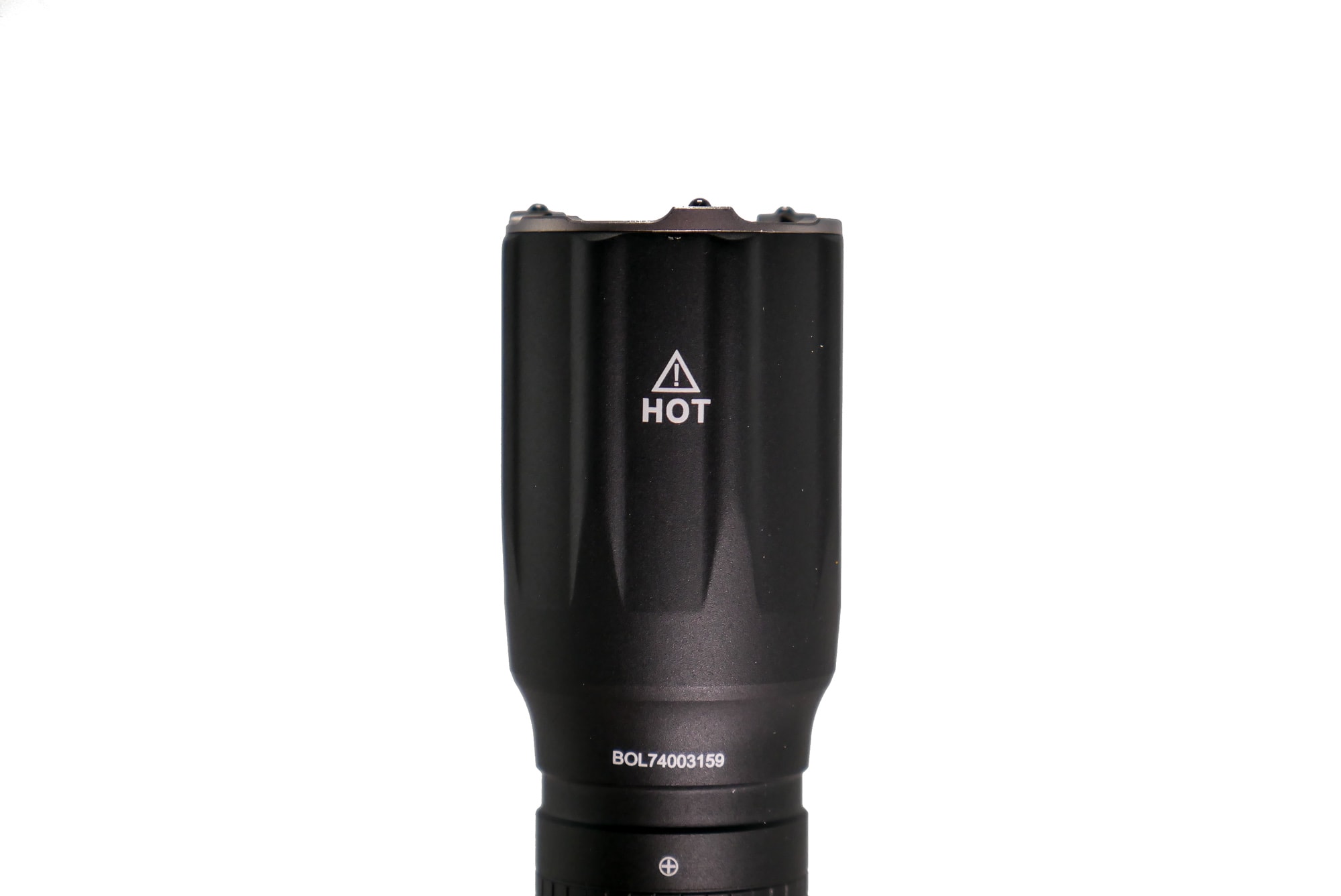
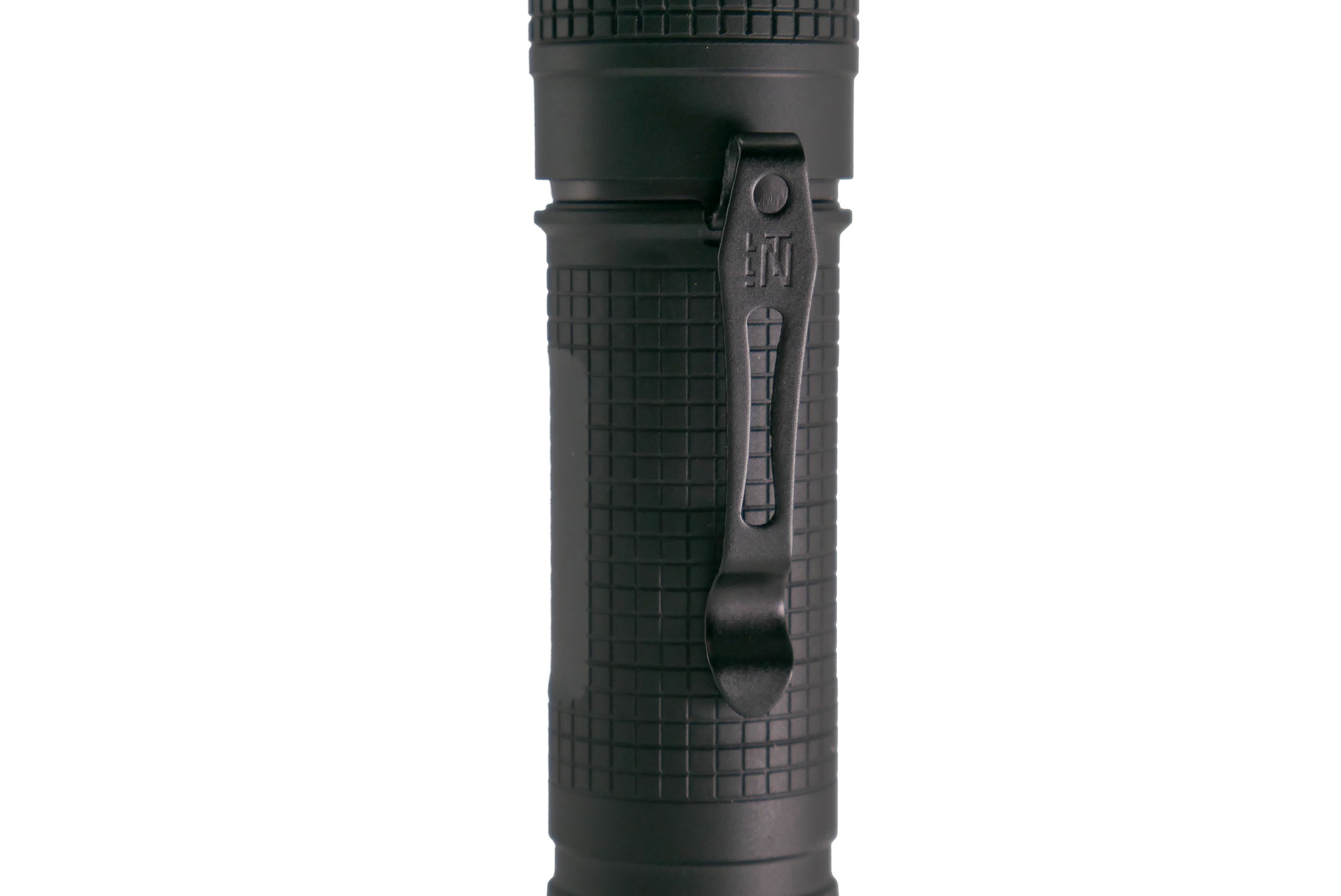
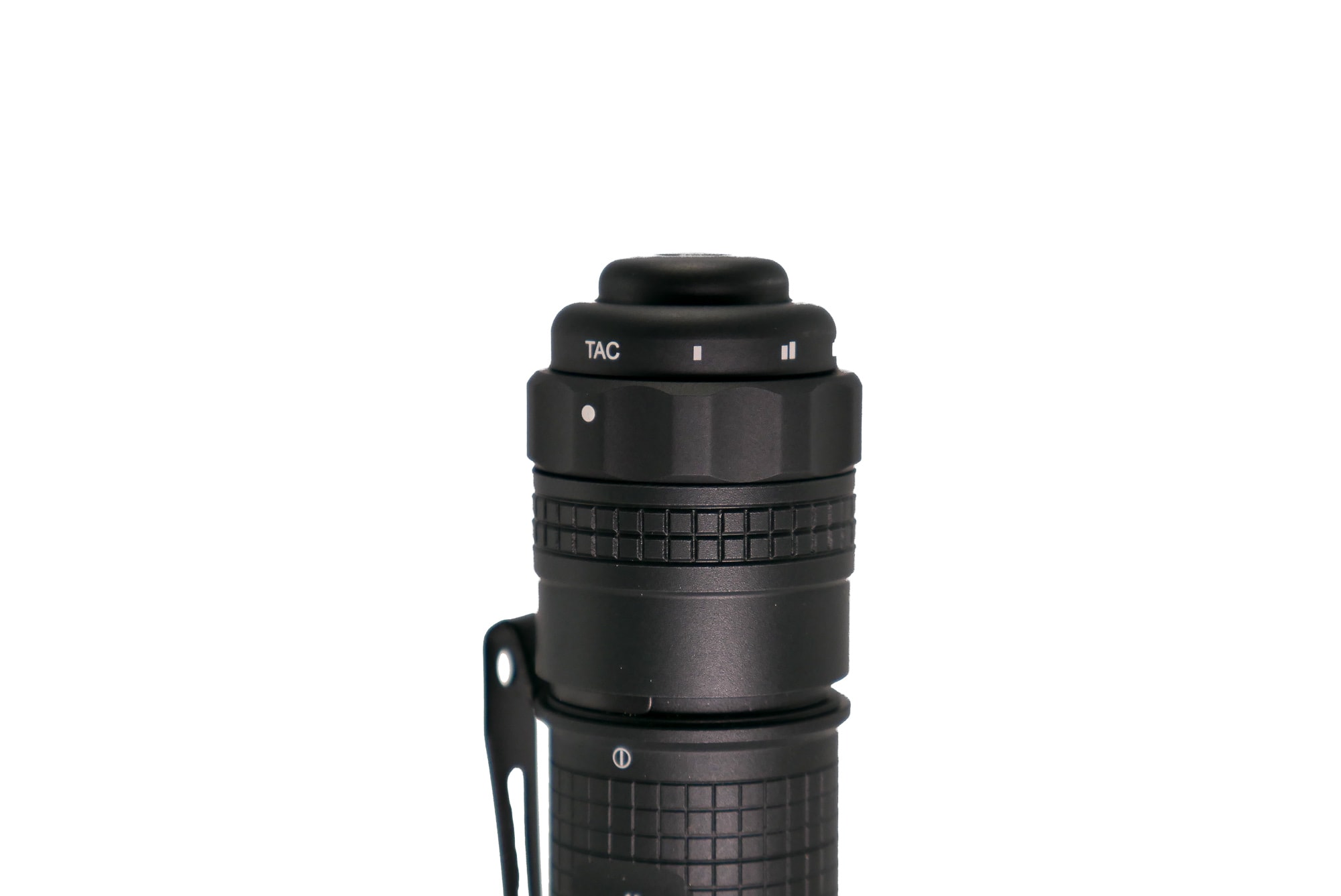

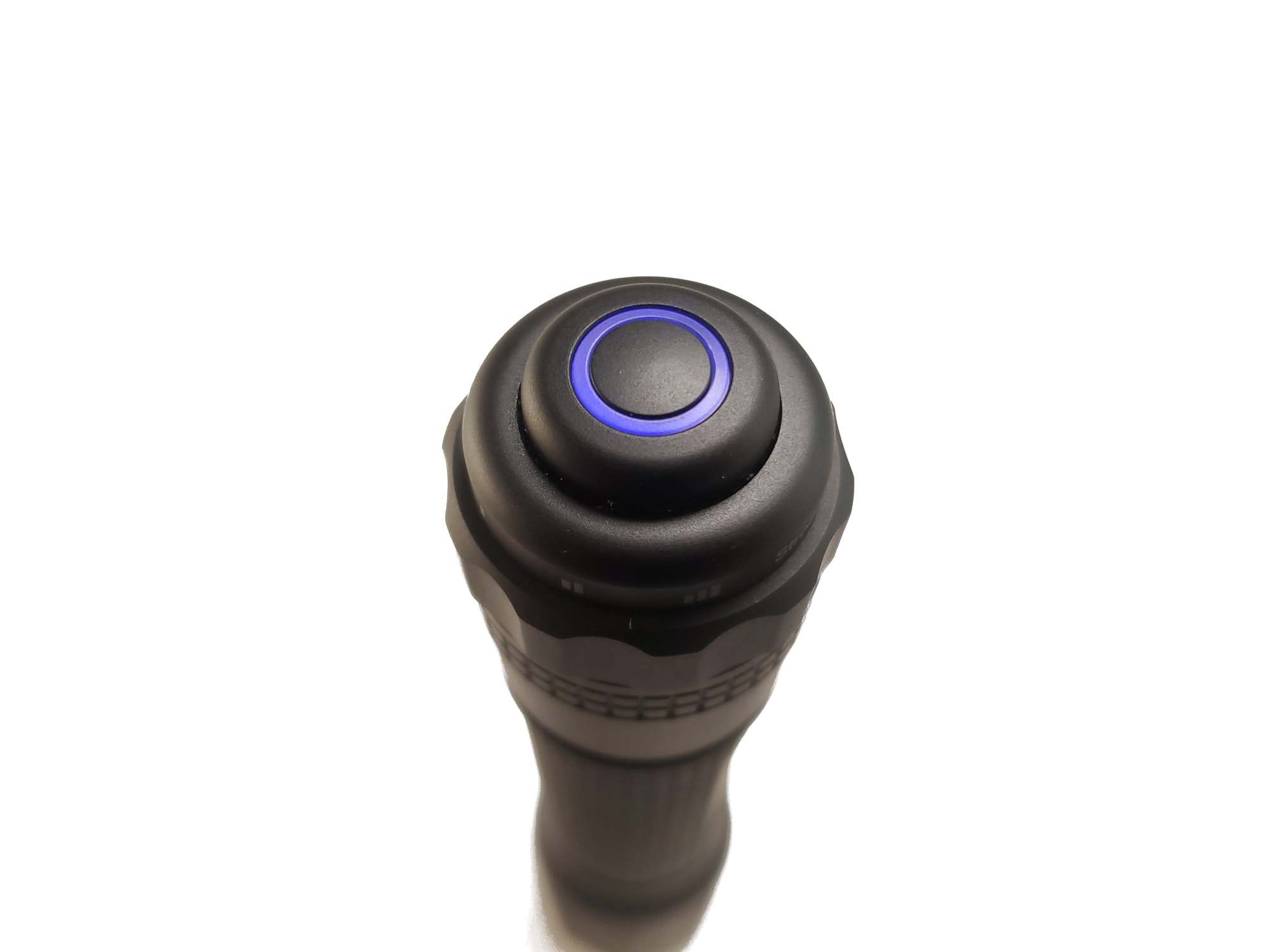
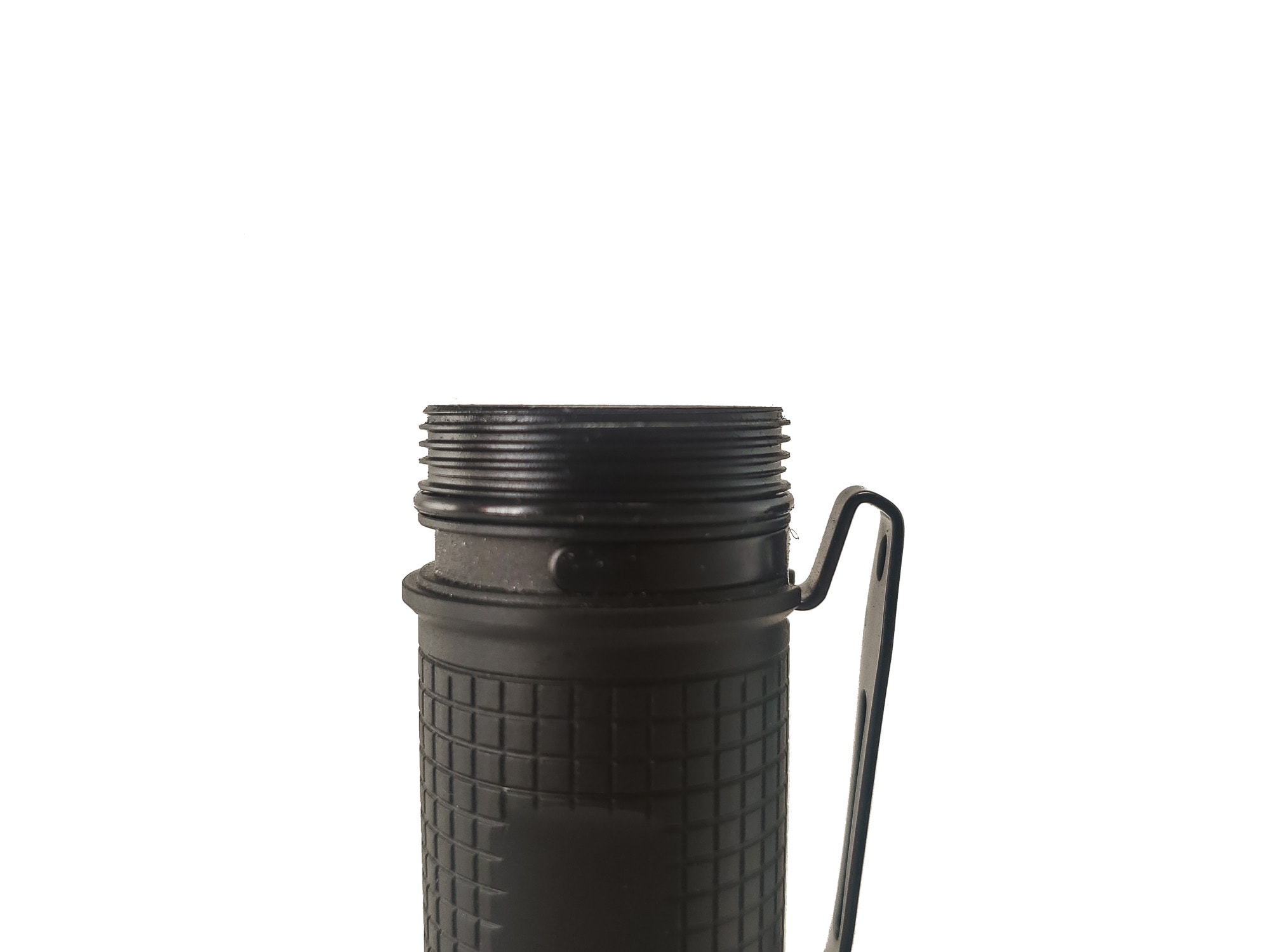
LED, Lens, Bezel, Beam, and Reflector
The bezel on the TA30C is a smooth reflector and glass lens combination. This will aid in throw versus flood, like an orange peel reflector will do. The SST-40 LED sits fairly deep and is clearly visible and measures under 68 CRI on all modes, with low being the worst at a measly 64.5 RA. Don’t get me wrong, the SST-40 still performs its job well, I just wouldn’t use it for bomb defusing anytime soon. Don’t want to mix up those red and green wires! These figures were taken with the Opple Lightmaster Pro at 4 feet. The Lightmaster also told me that the temperature starts off at just under 5300k on low and works its way up to 5600k in high mode. These cool (color temperature) beams shine through a glass lens protecting a smooth reflector.
Peering deep into the abyss, you can see that Luminus emitter peeking through. This is definitely the business end of the light, but if you had any doubts, you can see more proof with the titanium strike bezel with embedded nano-ceramic strike beads. These function as a glass breaker of sorts and are positioned on the crenulations of this titanium bezel. Finally, you have the beam. Aftering coming from the LED, bouncing around the reflector, through the glass and past the bezel, you finally get to the point of what a flashlight is actually intended to be used for.
The beam from the SST-40 comes through with a lean towards a greener tint on the lower power modes, but this diminishes slightly the higher mode you go. This is entirely expected from this particular LED, so I don’t put any blame on NEXTORCH for this. The hotspot is soft, which I prefer unless I am going for maximum distance, and the spill is quite round, save for the overhanging crenulations that rob you of your precious light output. Part of me wonders how much higher the measurements in the performance section would have been if it were not for the deep cutting crenulations. I am not enthused about this, but it seems that it may have been a give and take for the aggressive design of the strike bezel.

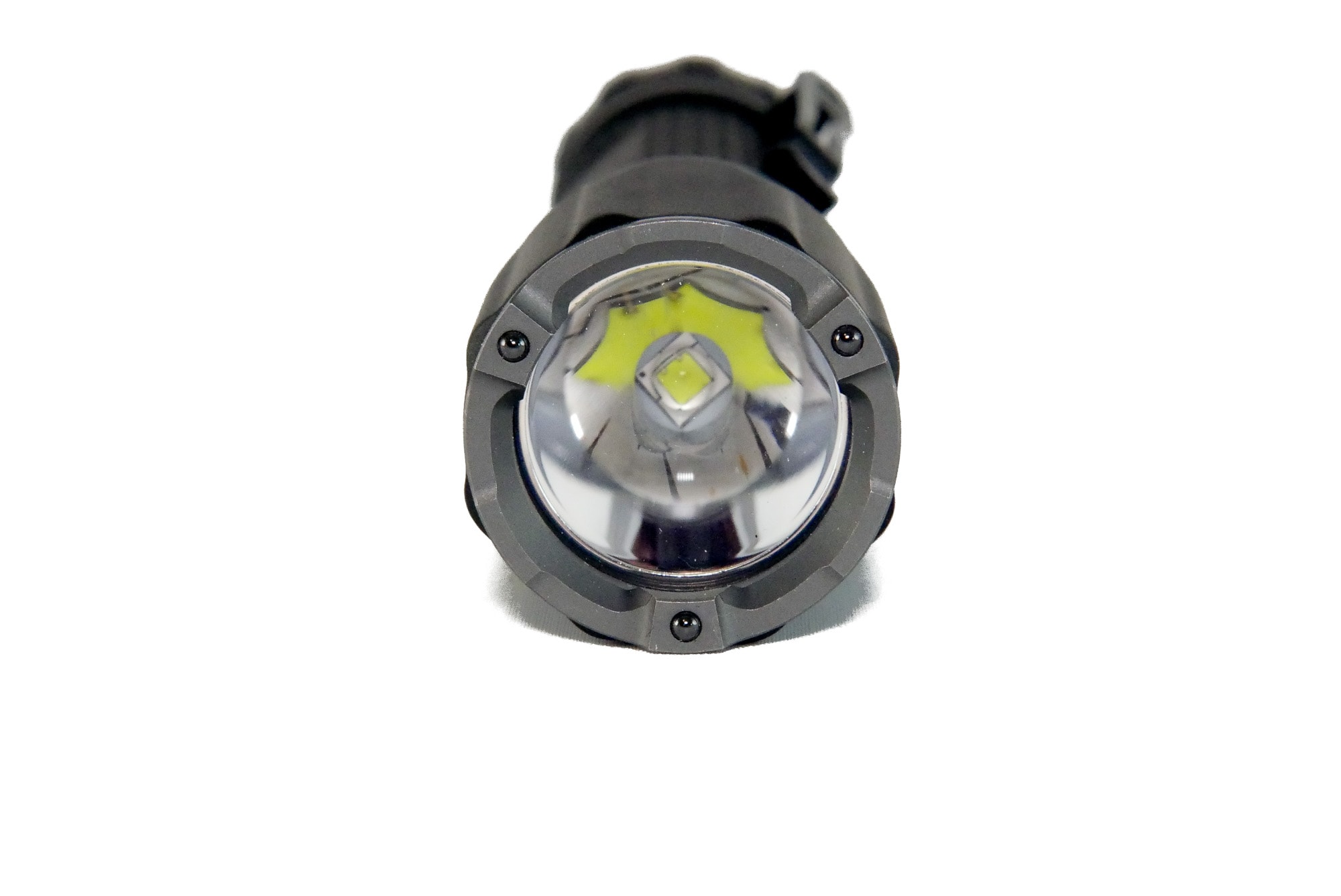
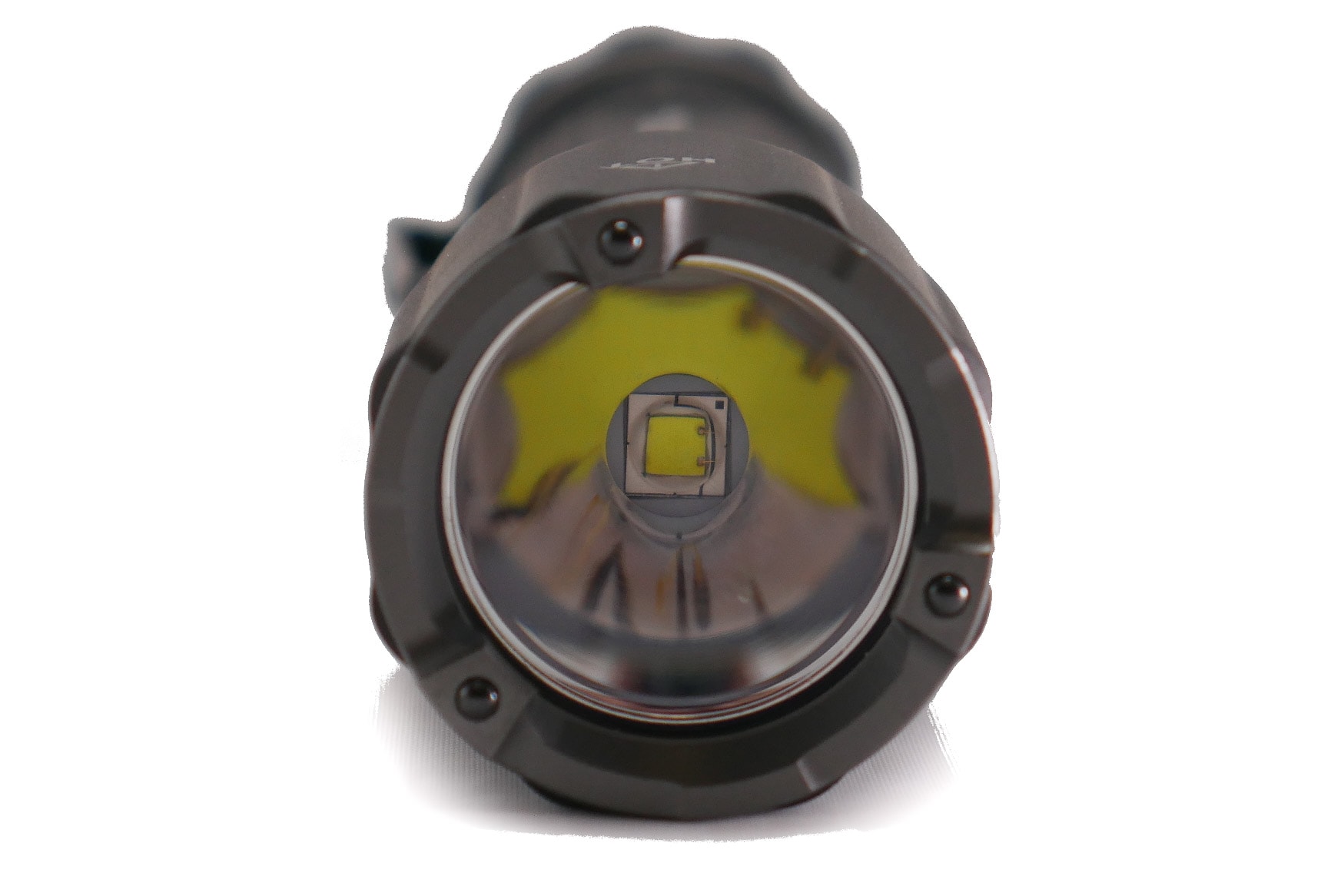

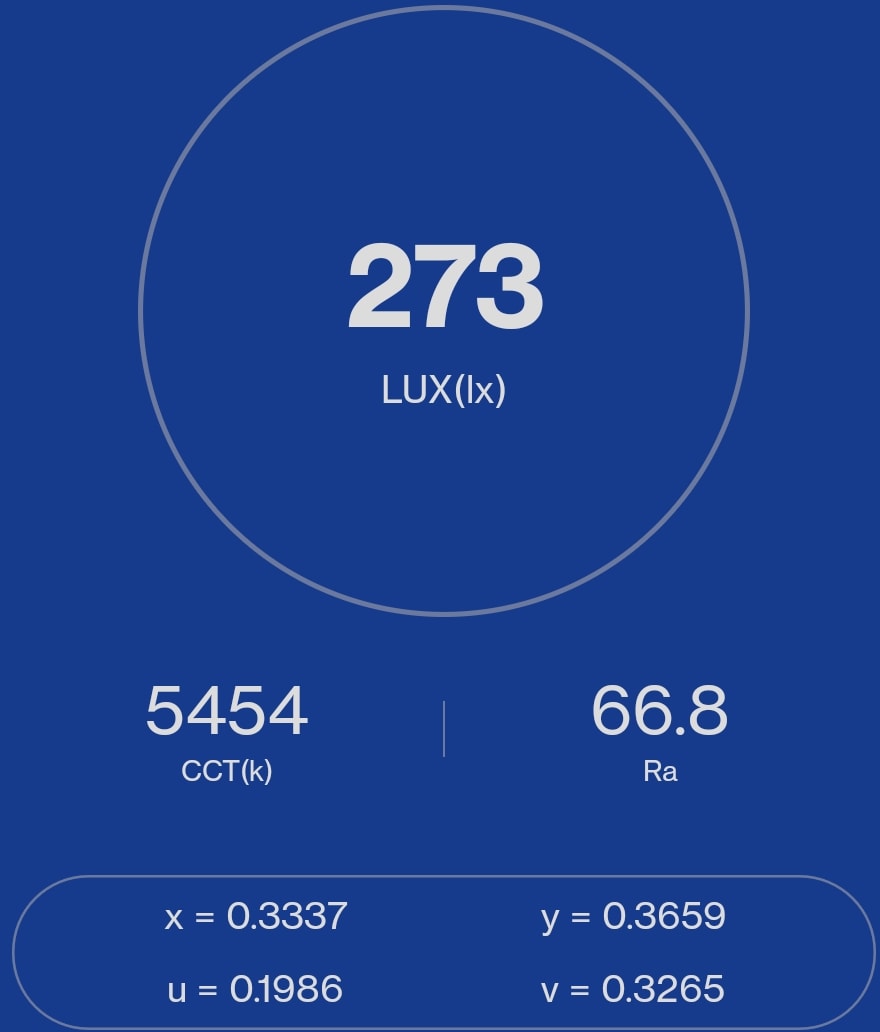
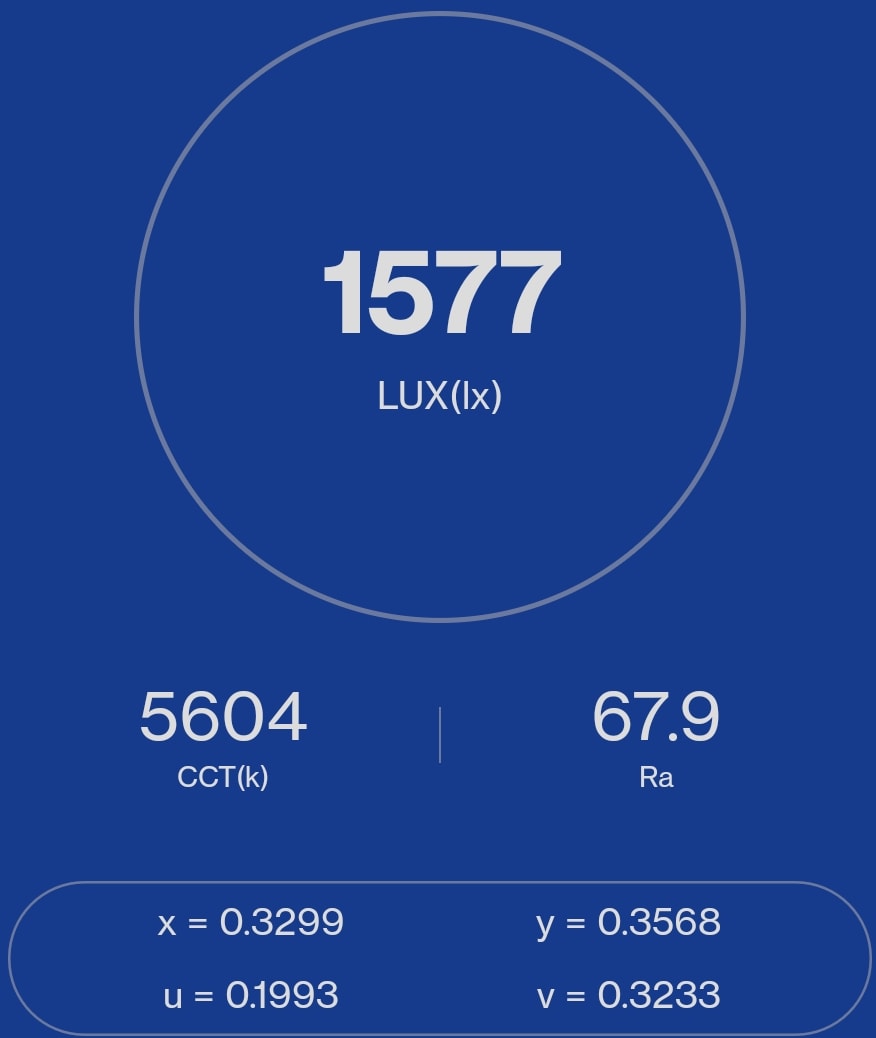
Dimensions and size comparison
Dimensions:
| Millimeters | Inches | |
|---|---|---|
| Length | 136 mm | 5.4 in |
| Head diameter | 30 mm (at widest spot) | 1.2 in |
| Body diameter | 23 mm | .9 in |
Dimensions are rounded to the nearest millimeter, and to the nearest tenth of an Inch.
Weight:
| Weight in grams | Weight in oz | |
|---|---|---|
| Without battery: | 96 g | 3.4 oz |
| With battery | 148 g | 5.2 oz |
Weight is rounded to the nearest gram, and to the nearest tenth of an Oz.
Flashlight size comparison with its competition:
Group 1: NEXTORCH E51C, NEXTORCH TA30Max, NEXTORCH TA30C, Wurkkos FC12, Sofirn SC32
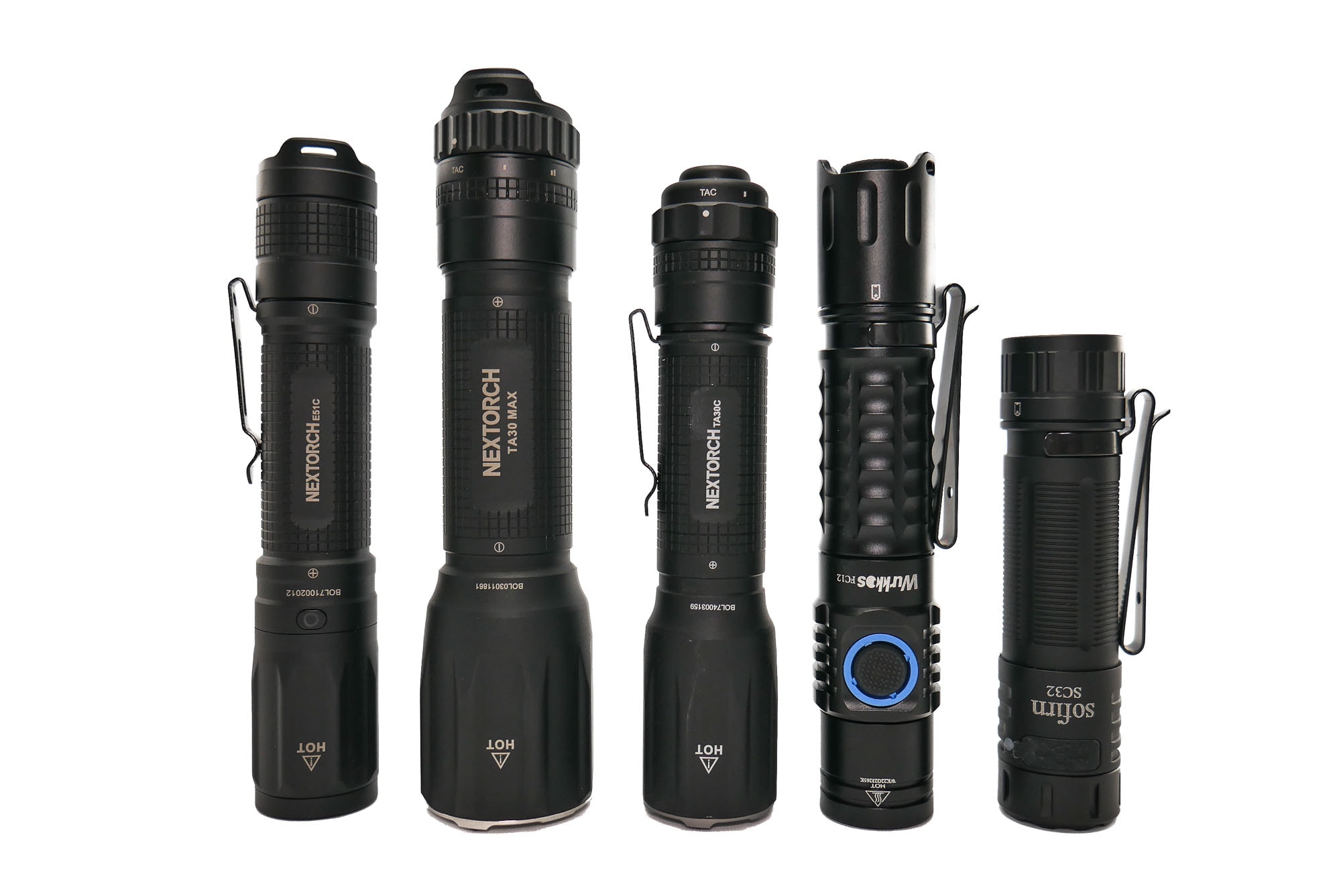
Driver & User Interface:
With the tail switch only UI from NEXTORCH, you are not going to get 17 different blinky modes, but in this form factor, you get the sense that it is okay. Now, I am not dogging on Andruil. I LOVE Anduril. But the design in the NEXTORCH lights give you a sense that a lot of those features are not needed and everything will be just fine. Very minimal, yet you get immediate access to the most important of modes. High output and Strobe are literally only a button press distance of 2mm away. Need High? Just press the button until you feel resistance. Need Strobe? Just press a tad bit harder. You are always ready to go. If you need any of the lower output modes, they are simply a single rotation away on the dial underneath that same button. I truly applaud this UI and implementing a battery indicator into that momentary button is just the cherry on top. I am quite interested to see what they do next.
Available modes:
- Low, Medium, High, Momentary High
Available blinky modes:
- Strobe
From OFF:
- Rotate dial to desired output
- Half press tailswitch: High output
- Full press tail switch: Strobe
From ON:
- Tailswitch will allow you to override with High or Strobe
- Rotate dial to desired output
Mode memory:
- If the light is on when you activate the tail switch, it will go back to previous mode after release.
Shortcuts:
- To High: Half press tail switch
- To Strobe: Full press tail switch
Low voltage warning:
- Red light in the tailcap will blink when under 25% battery
Strobe/blinkies
- Full press of tail switch or rotate dial to Strobe
Lock-out mode:
- No lockout mode present
PWM
- PWM is present on lower modes, but much less visible on higher modes
Batteries & Charging
There is no onboard USB-C charging on this light, but the accompanying NEXTORCH branded 18650 cell does have a USB-C charging circuit built in. Using a power brick capable of 65w and the included cable, the charging circuit brought the battery back to life.
It went from empty to full (charging circuit stopped) in 5 hours and 41 minutes. Unfortunately, the cell seems to be limited to .6 amps This seems kind of low, and I would have hoped for a quicker charge cycle. As charging neared completion, the charging circuit crawled at an undemanding .15 amps. Once it completed charging, the red (to indicate charging) battery indicator on top turned to blue. The battery itself is a button top and stands 70mm long. This is longer than a standard 18650, but that is to be expected when the charging is included on the cell.
I tested with some other cells I had on hand and the TA30C worked with all that I tried, but the springs seemed to not have as much tension the shorter the cells got. Unprotected flattop cells showed the most “wiggle” in the battery tube. I intentionally attempted to get the light to lose contact by smacking it against the palm of my hand, but there was still enough consistent pressure to keep the juice flowing. This is somewhat surprising because, although there are two springs, they are both short and thinner. The battery tube will also fit 2*CR123A cells and the TA30C includes a cell adapter to take up the extra slack by the dimensionally smaller batteries. These would jump up the voltage considerably. I wanted to see how it would handle the voltage difference, but unfortunately, I did not have two cells available to test.
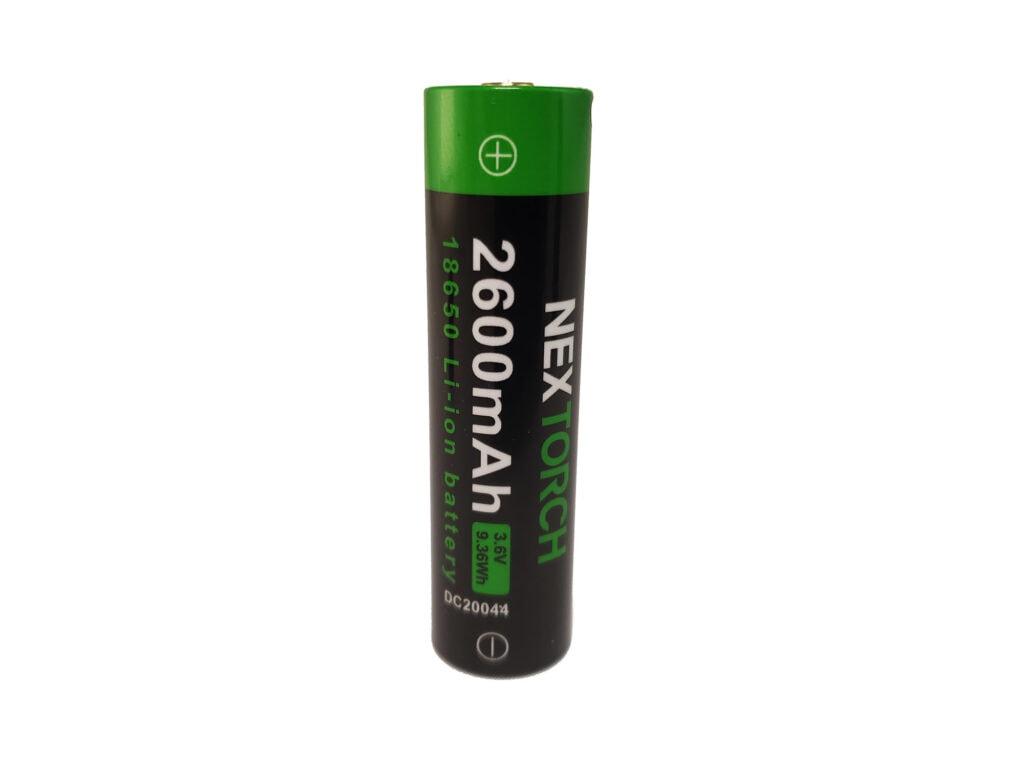
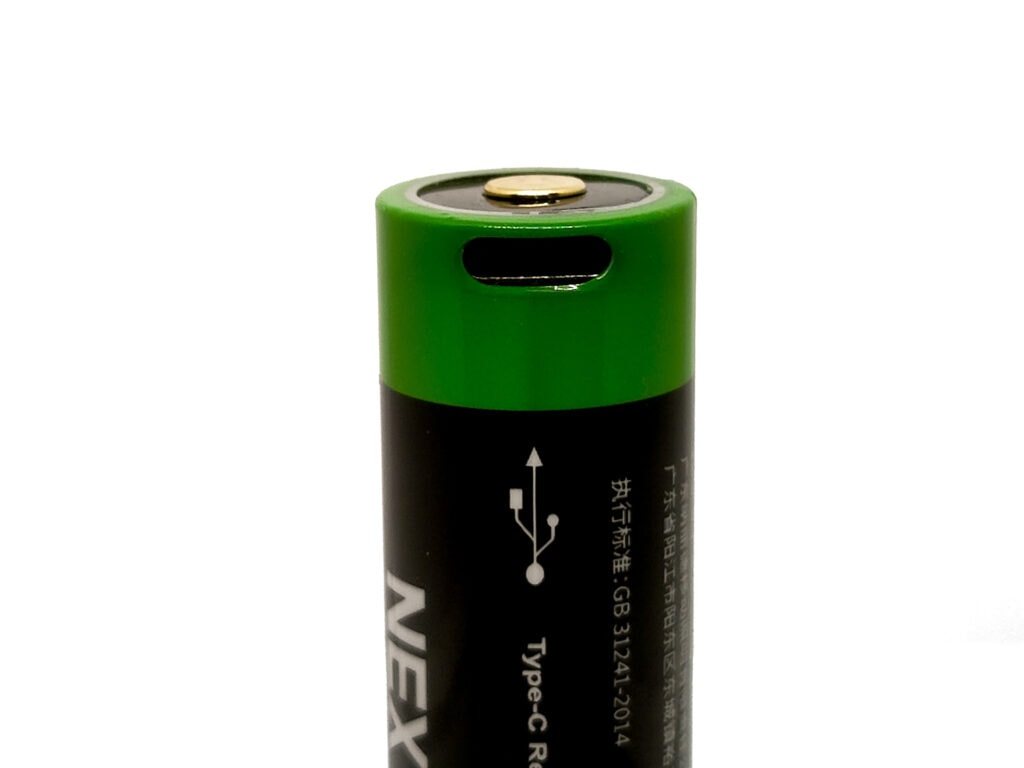
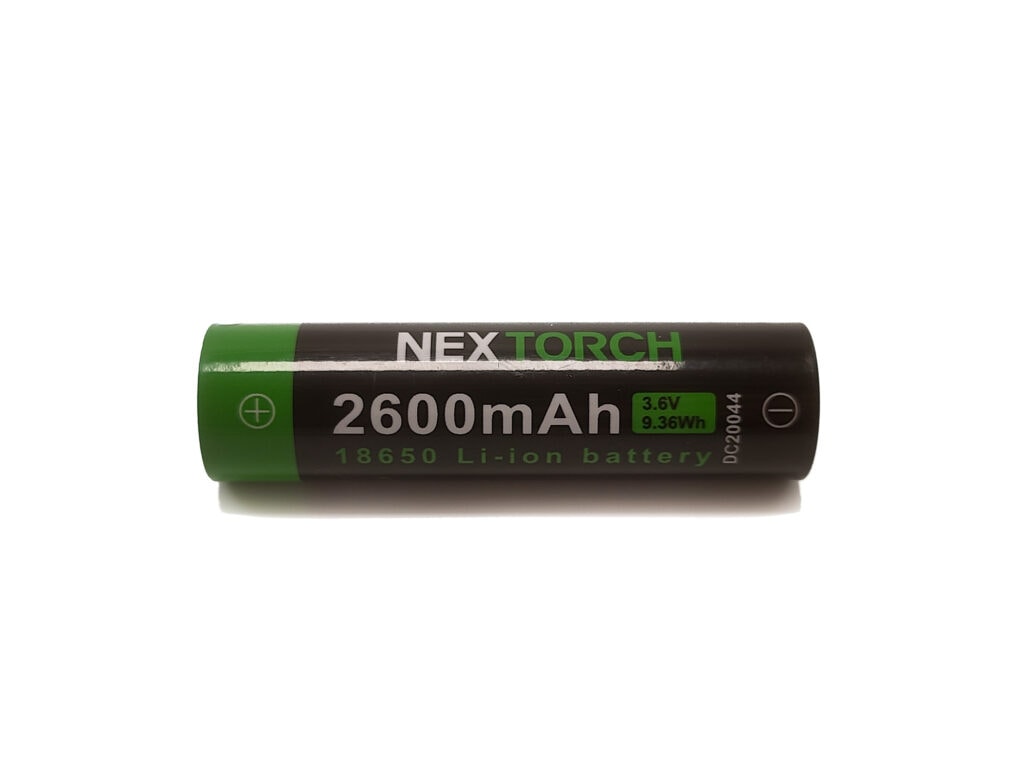
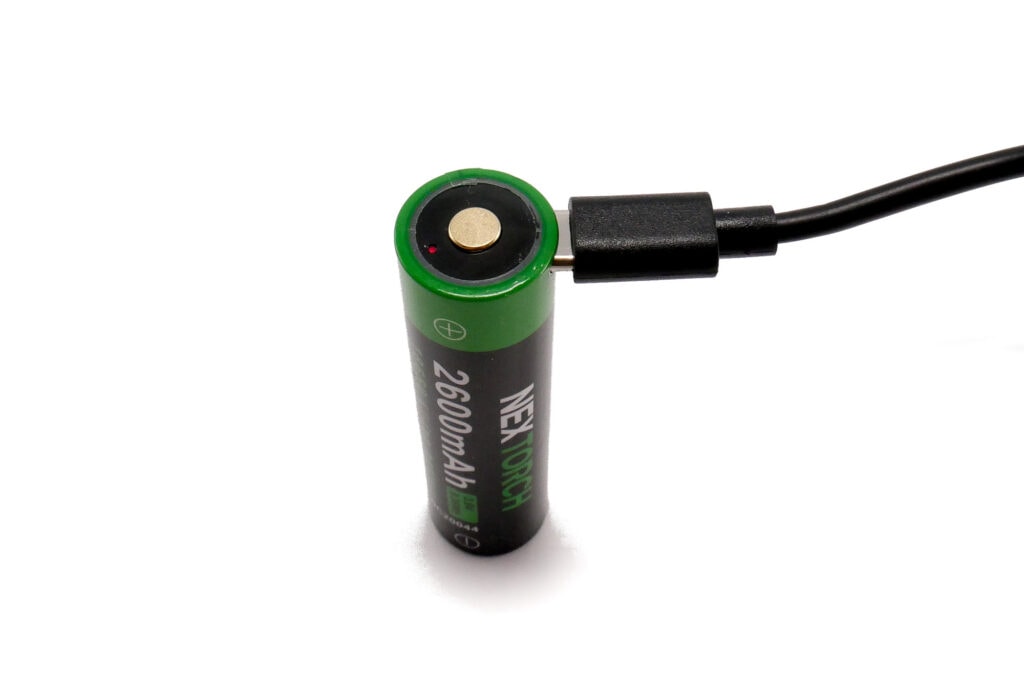
Performance test
All measurements were taken using a purpose built integrating sphere and an ExTech SDL400 datalogging lux meter. The known output from a light source (273lm Convoy S2+) was then taken into account when getting my figures calibrated for accuracy purposes.
Lumen measurements (for each mode)
| Mode | Specified | turn on | 30 sec | 10 minutes |
|---|---|---|---|---|
| Low | 20lm | 18lm | 20lm | 19lm |
| Med | 330lm | 274lm | 268lm | 258lm |
| High | 1600lm | 1586lm | 1442lm | 546lm |
Battery Life: Runtime graphs
The included NEXTORCH 18650 cells were charged until the charging circuit completed and then each mode was tested. Each runtime test was done until the lights shut off unless they were to take over 24 hours.


| Mode | Specified | Measured runtime ANSI | Time till shut off |
|---|---|---|---|
| Low | 50h | 24h+ | 24h+ |
| Med | 4h 30min | 4h 50min | 5h 20min |
| High | 2h 30min | 2h 25min | 2h 58min |
I did not run the low output test to its entirety, but I usually opt to run at least a full 24 hours on known longer tests, just to make sure that manufacturers are not blowing wind up our skirt. I saw as small as a 1 lumen shift in the output during the long runtimes and this is completely expected. Everywhere else, the TA30C surpassed specs by almost half an hour, or more.
ANSI FL1 standards: The runtime is measured until the light drops to 10% of its initial output (30 seconds after turning on). This does not mean that the flashlight is not usable anymore. The last column shows how long the light actually works till it shuts off. If there is a + symbol, it means that the test was stopped at that particular point, but the light was actually still running. This happens on certain occasions, with certain drivers, firmware, or batteries.
Peak beam intensity and beam distance measurements
Throw information was gathered using an Opple Lightmaster Pro at 10m.
| Mode | Specified | Candela measured | Meters | Yards |
|---|---|---|---|---|
| Low | 144cd | 285cd | 34m | 37 yd |
| Medium | 4225cd | 4,095cd | 128m | 140yd |
| High | 22952cd | 23,875cd | 309m | 338yd |
My numbers were a little on the off slightly, but not by earth shattering amounts. Close enough to be what I would call accurate. Performed very well in this category and was as expected given the output calculations obtained.
Extra info: Peak beam distance according to ANSI FL1 standards: The calculated value of distance in meters at which the flashlight produces a light intensity of 0.25 lux. (0.25 lux is about the brightness of a full moon shining on an object). The columns ‘Meters’ and ‘Yards’ use rounded numbers.
Beamshots
Camera settings and distance: Panasonic Lumix G7 with ISO 5000 and ev0.0 at 70y.
Beamshots of the following flashlights compared:
- NEXTORCH TA30C
- NEXTORCH TA30Max
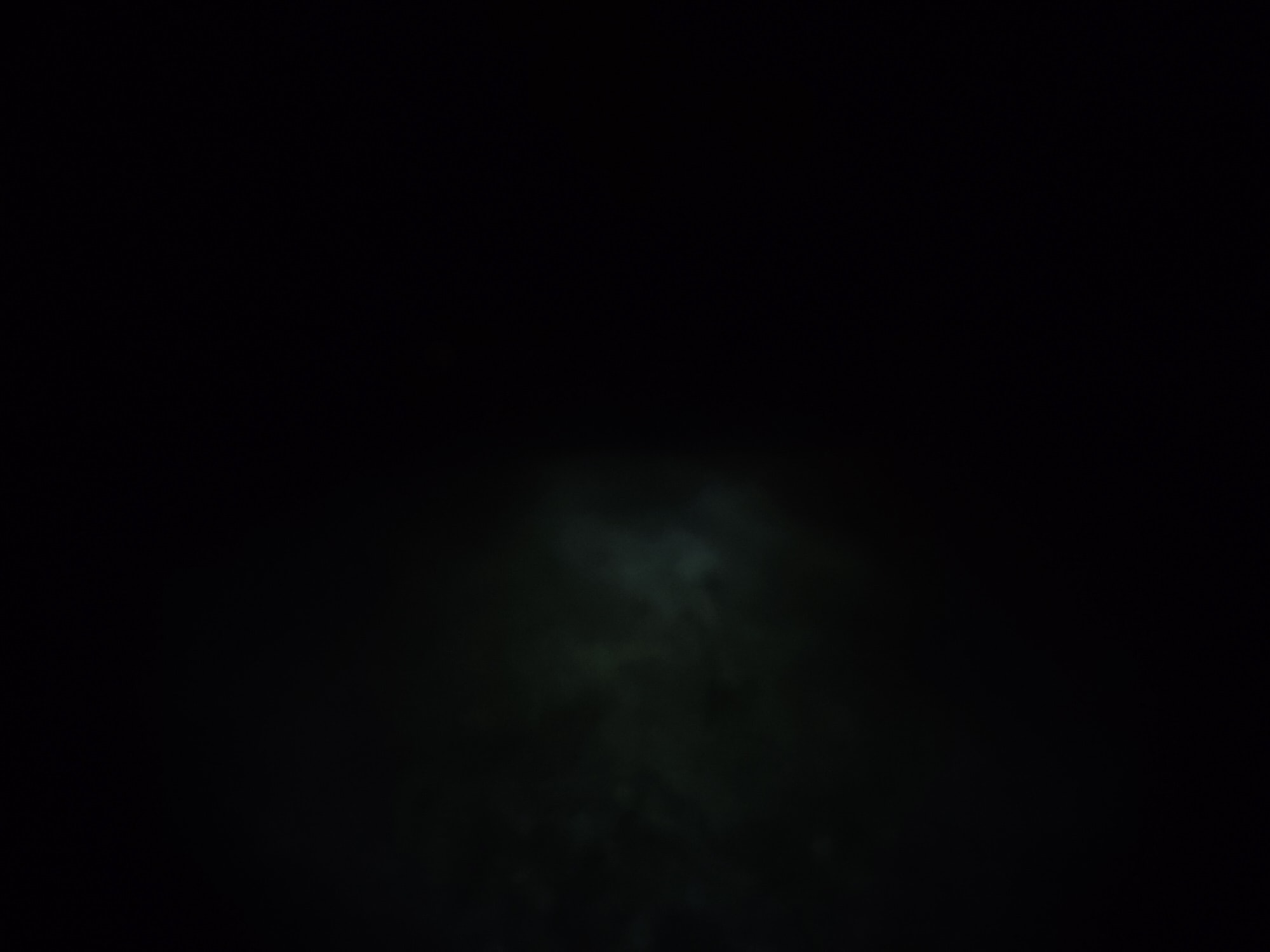
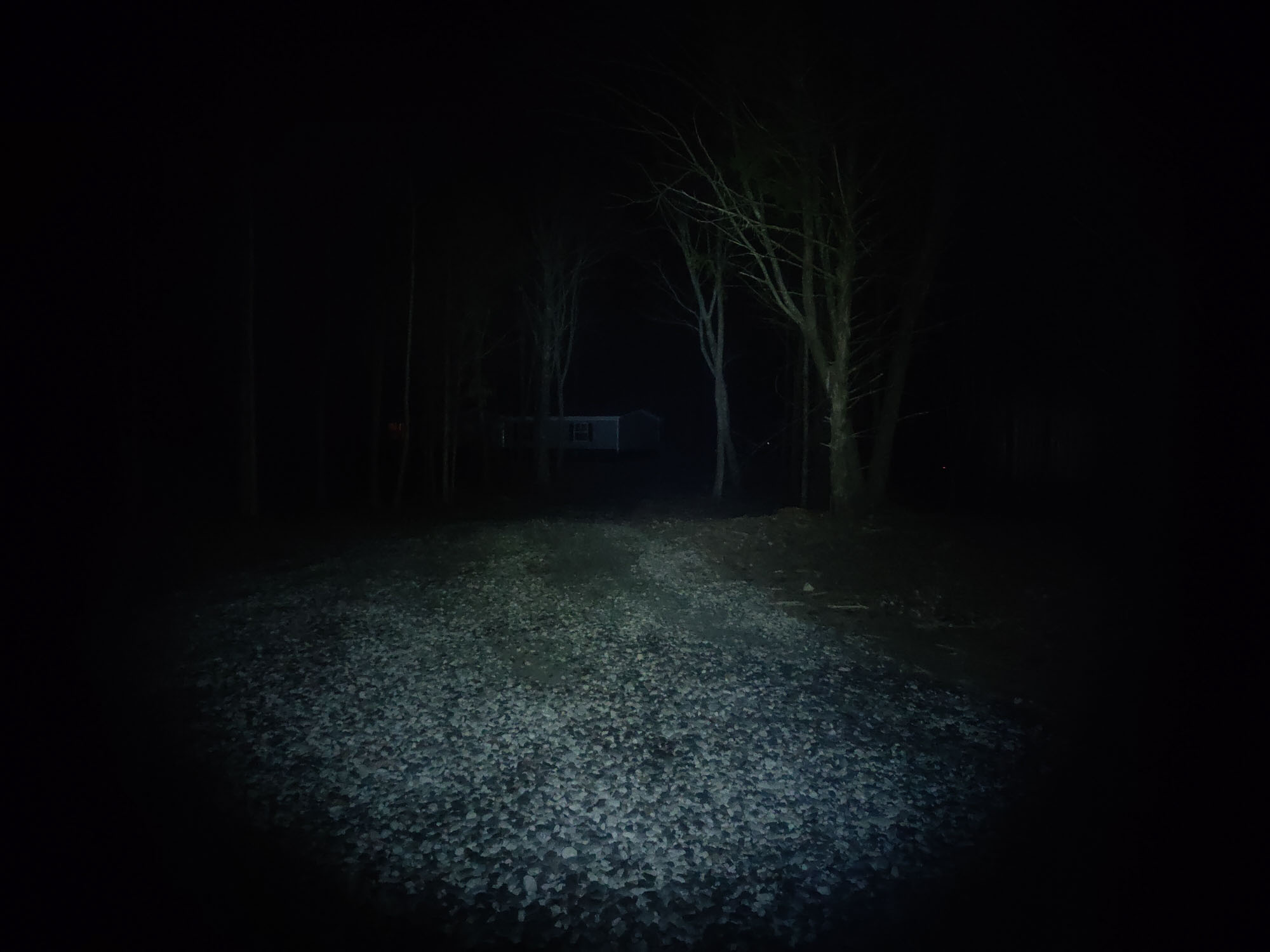
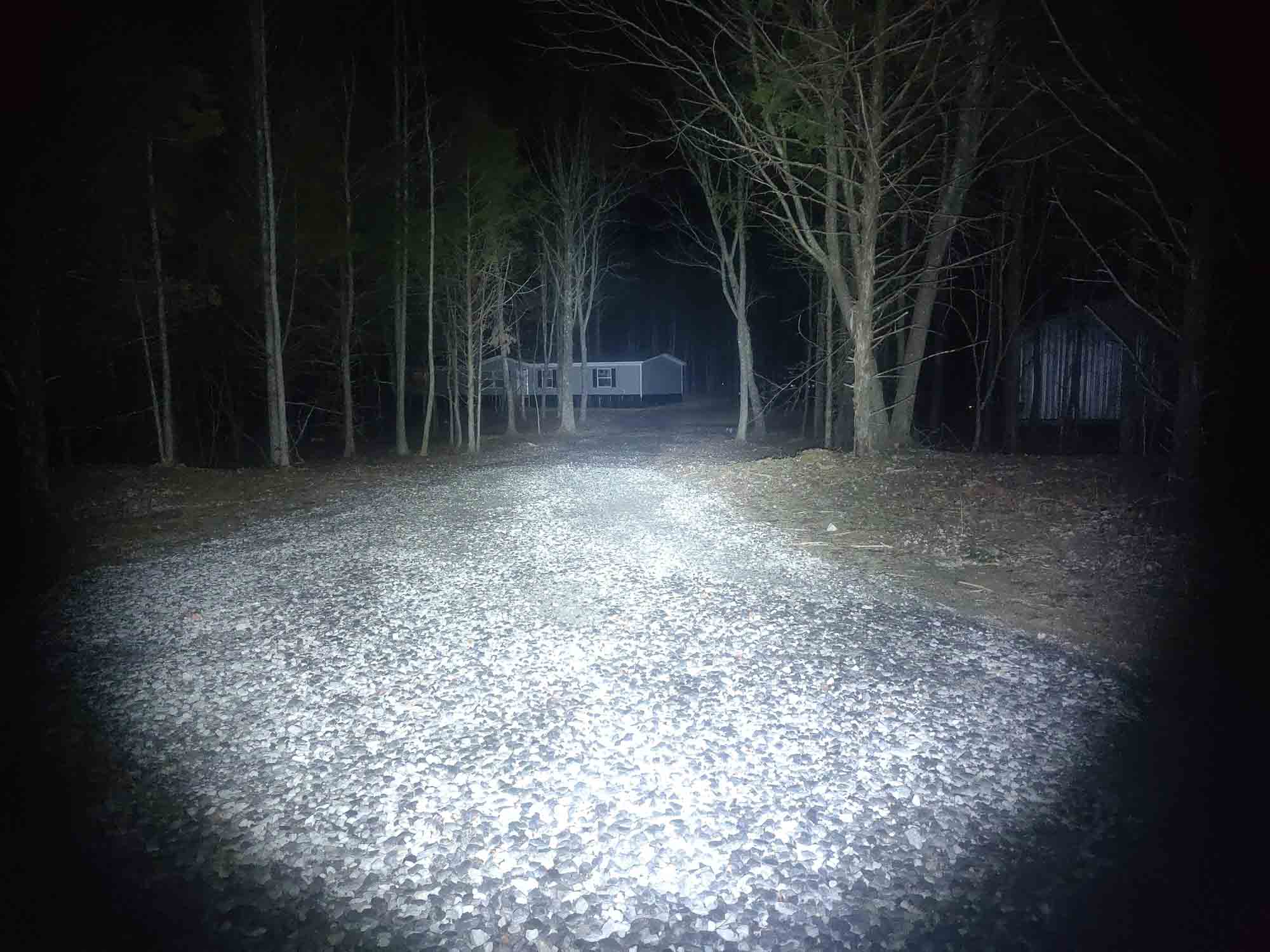
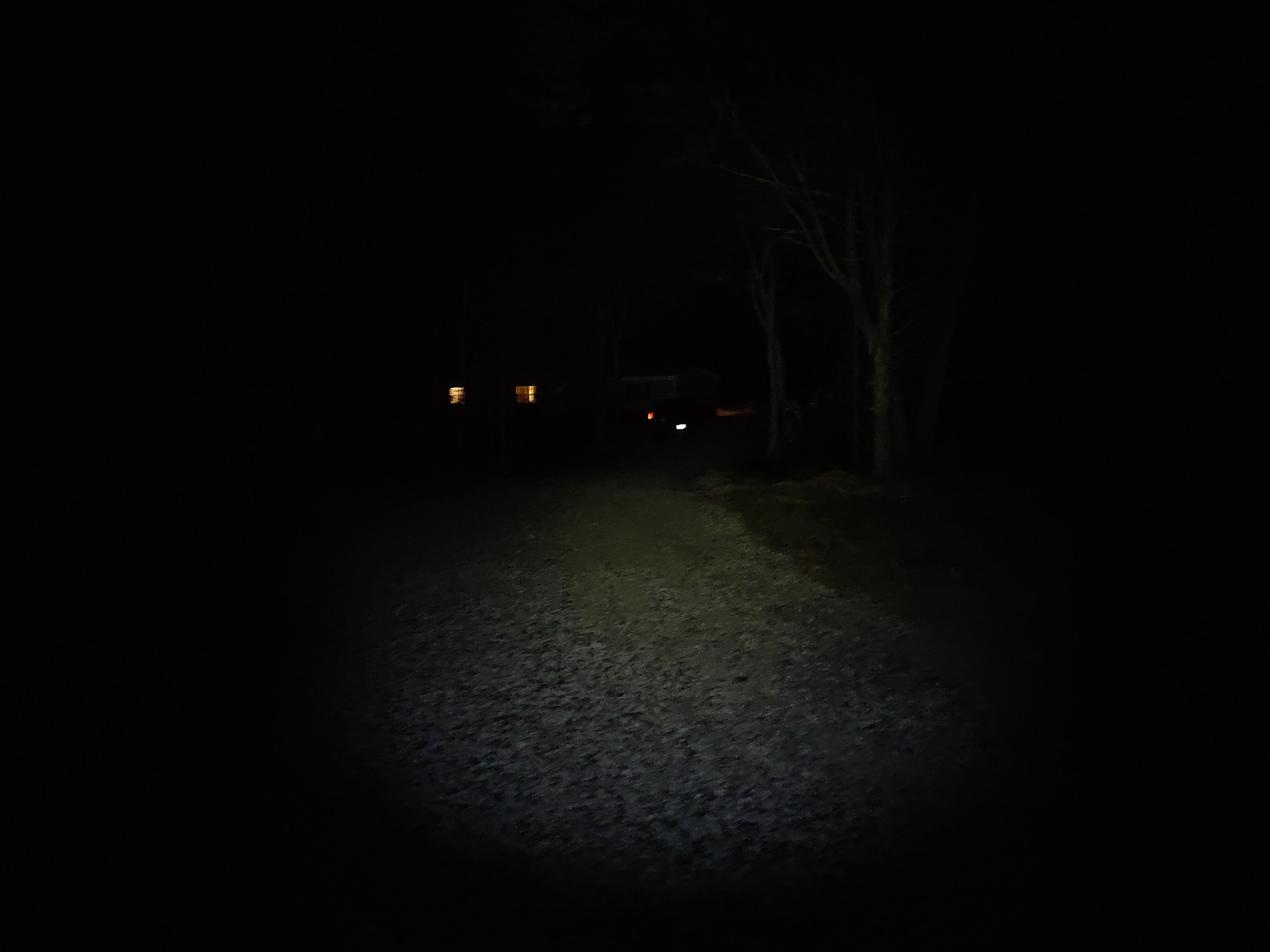
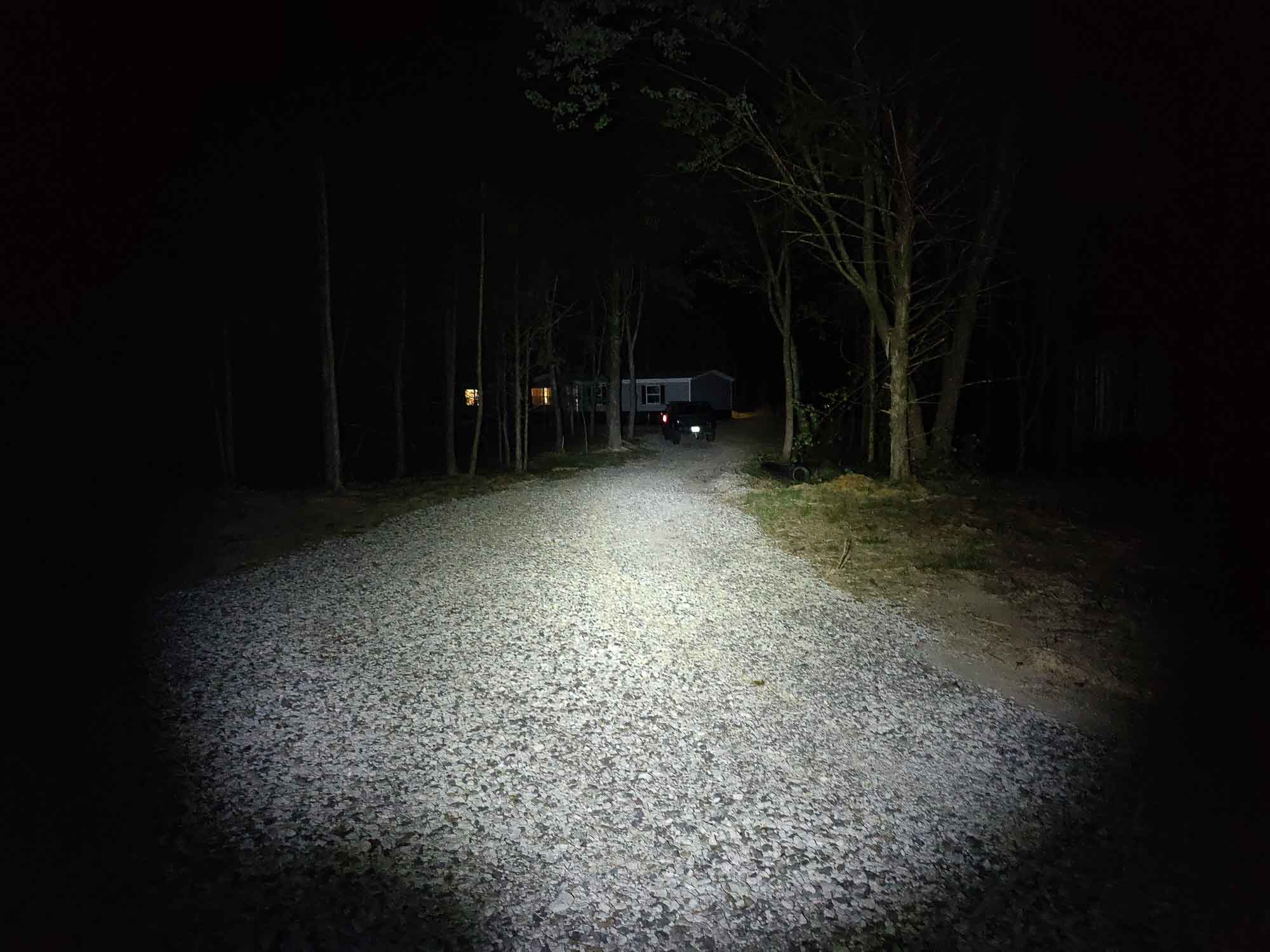
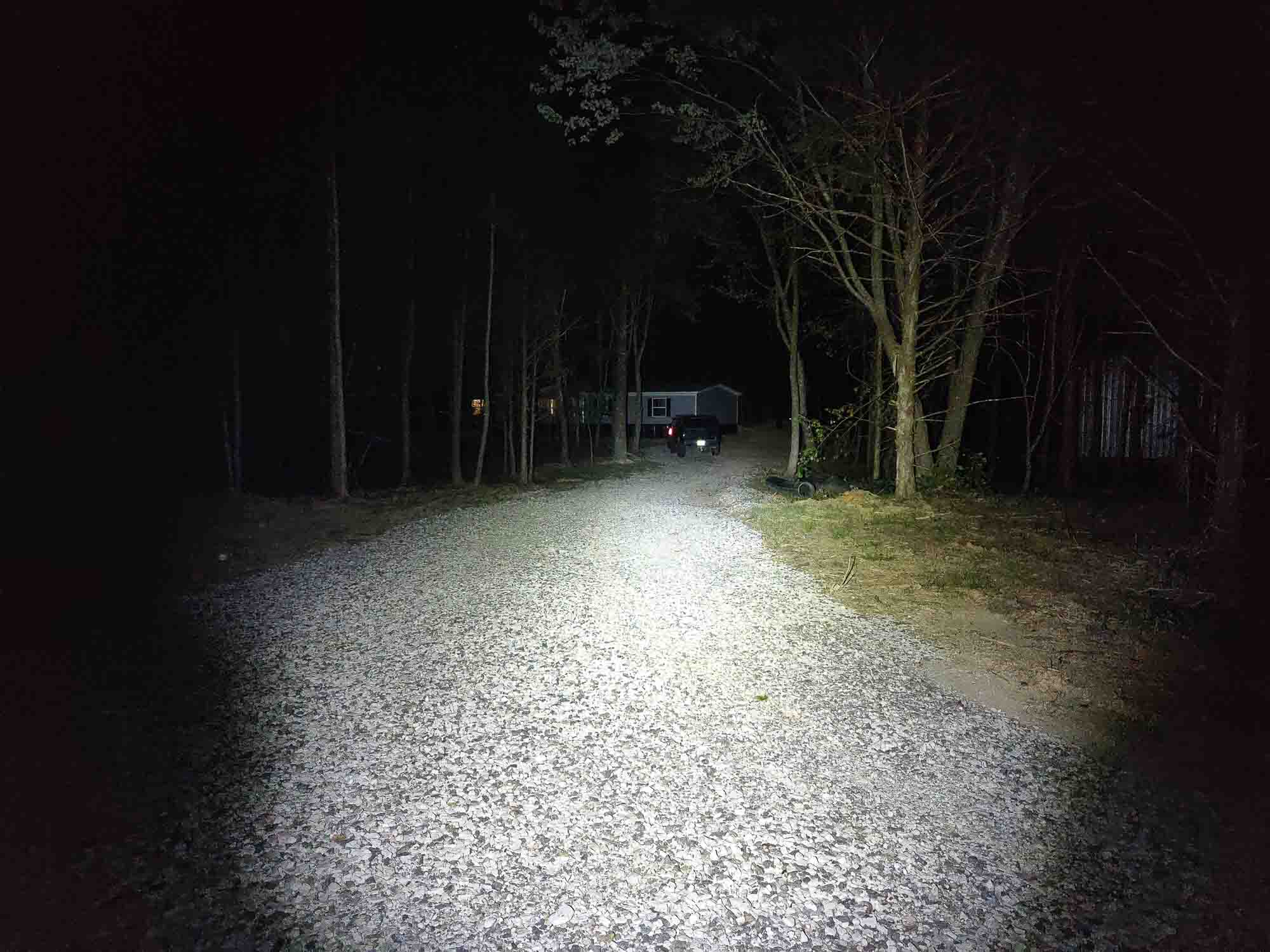
Disclaimer: This flashlight was sent to me for review at no cost by NEXTORCH. I have not been paid to review, nor have I been holding back on problems or defects.
Final Verdict
Pros
- Excellent UI implementation
- VERY accurate output specs
- Incremental upgrades all make perfect sense
- CR123A battery option
Cons
- Onboard charging would be very convenient
- Price limits its potential market
- Very low CRI
- Deep crenulation cuts in the beam
- Slow charge speed
Explanation on star ratings:
1: Avoid: a match would be a better choice – 2: Poor: significant defect or issues; almost unusable – 3: Average: some defects or issues; but still usable 4: Good: recommended (minor issues) – 5: Great: highly recommended

4 stars: ★★★★
I did not hide the fact that I loved the TA30 Max. And frankly, this is absolutely no different. While not as powerful, there is still ample output coming from this tactical light and the user interface maintains its simplistic nature to make sure that you don’t need to think about settings if you are in the middle of anything, shall I say, “dangerous”.
There is an awesome hand feel to the NEXTORCH lights that continues to give both a sense of security and durability. It makes me want to take care of it, keep it clean and always at the ready. Not because it is fragile, but in reciprocity. I know it will be there for me when I need it. Well, that is, assuming the battery is charged.
Maxing out at .6 amps lends me to think I may need another battery (or two) to keep on hand as I don’t like being without light when it could matter most. The finish on the pocket clip also leaves something to be desired. It started to wear in what feels like immediate use. This is down on power from the TA30Max, but I don’t look at it as a shortcoming. Even though it carries the TA30 name, it is like a different submodel instead of a downgrade. The only flaw I found in the design of this light that I wouldn’t consider to be superficial is the fact that the crenulations on the bezel cut pretty deep into the beam pattern. If light is coming out at the business end, I would love to be able to use all of it. All in all, since I received this light, I have been carrying it in my pocket everyday, even while gathering information for other reviews. For replacing my pocket carry, It is very deserving of 4 stars which would be higher if charging didn’t take so long.
Buy your NEXTORCH TA30C here:
Get 10% off at NEXTORCH using our exclusive discount code: 1lumen10
1lumen selects and reviews products personally. We may earn affiliate commissions through our links, which help support our testing.